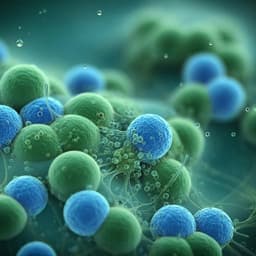
Environmental Studies and Forestry
Pick up and dispose of pollutants from water via temperature-responsive micellar copolymers on magnetite nanorobots
J. V. Vaghasiya, C. C. Mayorga-martinez, et al.
Discover the innovative world of thermosensitive magnetic nanorobots, designed for efficient water treatment. These remarkable nanorobots selectively capture harmful pollutants like arsenic and atrazine and can release them on demand, turning waste into a manageable resource. Developed by Jayraj V. Vaghasiya, Carmen C. Mayorga-Martinez, Stanislava Matějková, and Martin Pumera, this research paves the way for a cleaner and more sustainable environment.
Playback language: English
Related Publications
Explore these studies to deepen your understanding of the subject.







